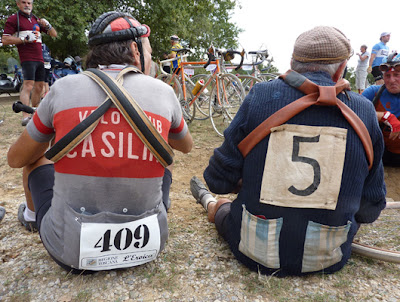Vintage Find: 1980 Schwinn World Tourist Five Speed
My new coffee shop bike
I recently responded to a classified ad on a pair of Schwinn World Tourists. I bought the this pair for 80 dollars, but the men's bike could have been designed for Wilt Chamberlain. I couldn't even throw my leg over the exaggeratedly tall top tube of the bike. The step through version, or ladies frame (although I refuse to call it that, let's just refer to it as a step through, ok?) was designed also for a very tall woman, but it fit me like a glove when I got on it for a test ride. I took these bikes home and stayed up late buffing out the step through frame with some steel wool and WD40. The dynamo wasn't working at first, so I removed the head of the generator and sprayed that down with some WD40 as well. Once I got it loose enough to move, I spun the cranks and the lights lit up. I then took it for a spin around my block at night. Riding this bike is like riding a 1960's Chevy Impala. The circular non-LED headlight lights up yellow and not so bright, kind of like the round headlights of an old car.
I wasn't even three houses down my block and a neighbor spotted me and complimented me on the bike. I also enjoyed the upright position the bike put me in. Not that I have any problems riding leaned onto the bike, but the different positioning offers a different perspective while riding on it. Granted, this bike isn't a road bike. It isn't meant to go fast, but I already own fast, more intense bicycles. This bike, although not as fast, and according to some American standards, not designed for me (because I'm a dude) is the kind of bike that will stick with me when I no longer have the itch for hard core cycling but still want to excercise and pedal around a bicycle. In fact, there are actually some benefits to owning a step through bicycle as a guy. It has optimal geometry if you have back problems (which I happen to have as well, not severely though). There is no danger zone area if you happen to crash on the bike, since there is nothing that will bang your family jewels out of existence. It's not a touring bike, but there are accounts of many people riding long distances on step through bikes. Many men in Belgium commute on a step through. In Amsterdam, this bike is referred to as a dutch style bicycle.
Here's a few pictures of my step through bicycle.
 |
| A look from the rear. The dynamo is on the right side of the bike, with a little round taillight attached. |
 |
| The front headlight on the bicycle is in working order. |
 |
| The saddle is comfy and well broken into. |
It may sound like I'm rationalizing my choice in owning this bicycle, but this bicycle is truly designed for me and I feel comfortable on it. I don't feel like I'm compromising my masculinity in riding what a few people might consider a ladies bike. I feel that the perception of cycling in America needs to broaden to be more accepting outside of the norm. There are road bikes and mountain bikes. They very seldom make bicycles like this anymore. Even the "hybrid" bicycles are just mountain bikes with thinner wheels or road bikes with a flat bar instead of a drop bar. It's common sense to ride a step through bike, and I believe there should be something like this available for men in most bike shops in the US. That will open up a new market to older gents and those guys who would like to ride but otherwise can't seem to bend over or have mobility issues. Even if you just want something that expresses your personality, or have plans on doing a tweed ride in the future, this bike is for you. This bike is laid back fun in a non-aggressive, "I'll get there when I get there", sort of way.
If you are a guy who for some reason finds a bicycle like this and want to make it your own, don't be ashamed. You can ride your bike with your head held high knowing that you are not the only dude in America on a step through frame.














































